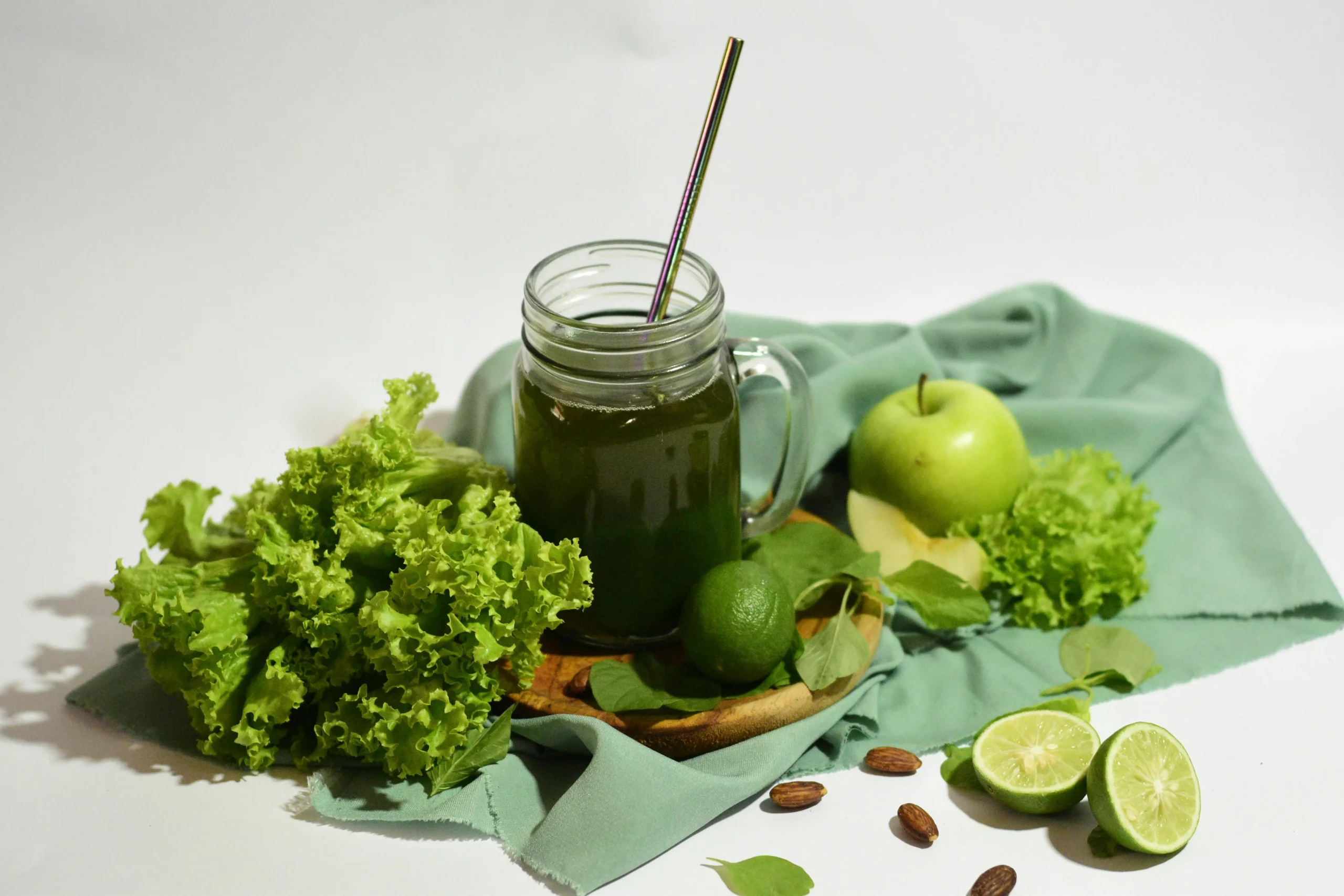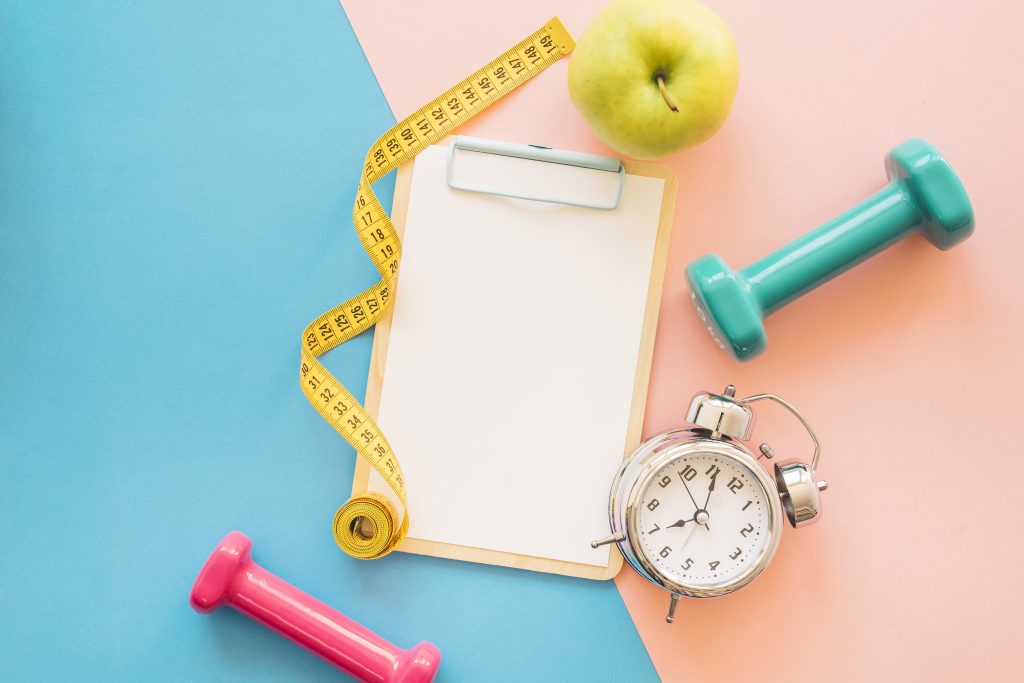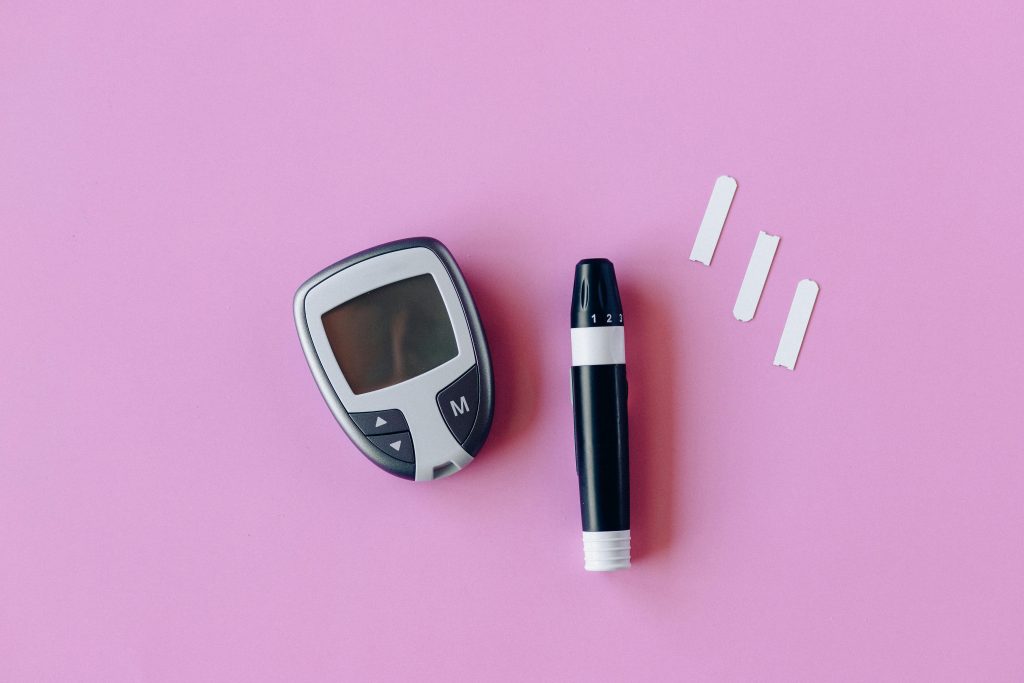Table Of Contents
-
Key Highlights: What You'll Learn
- Clinical Evidence: Do Low-Carb Smoothies Help Diabetics?
- Blueprint for the Ideal Diabetic Smoothie
-
Interactive Smoothie Nutrition Calculator
- Meal Replacements and Diabetes: What the Research Shows
- Diabetic Smoothie Ingredient Swaps and Customizations
- Mistakes to Avoid (and Best Practices to Follow)
-
Frequently Asked Questions
-
Conclusion: Your Path to Blood Sugar-Friendly Smoothies
-
References and Sources
Key Highlights: What You'll Learn
- Science-backed formulas from NIH clinical trials show low-carb smoothies reduce glucose and insulin spikes in Type 2 diabetes patients
- Optimal macronutrient targets: 15-25g net carbs, 8g+ fiber, and balanced protein/fat ratios for maximum blood sugar stability
- Ingredient selection mastery: Low-GI fruits, unsweetened plant milks, and protein-rich additions that won’t spike your glucose
- 5 clinician-approved recipes with complete nutrition panels and step-by-step preparation instructions
- Customization strategies for different calorie needs, protein goals, and taste preferences using Greek yogurt, nut butters, and seeds
- Common mistakes to avoid: Why fruit juice, flavored yogurts, and sweetened plant milks sabotage blood sugar control
- Meal replacement guidance based on clinical research comparing homemade vs. commercial diabetic drinks
Clinical Evidence: Do Low-Carb Smoothies Help Diabetics?
The short answer is yes—and the research is compelling. A groundbreaking NIH clinical study tested a specialized smoothie formula (SMMC) against commercial diabetic drinks in Type 2 diabetes patients. The results were remarkable:
Clinical Trial Results: SMMC Smoothie vs. Standard Formula
| Measurement | SMMC Smoothie | Standard Formula | Improvement |
|---|---|---|---|
| Glucose AUC (mg·h/dL) | 285.4 | 324.7 | 12.1% lower |
| Insulin AUC (μU·h/mL) | 142.3 | 187.9 | 24.3% lower |
| Peak Blood Sugar (mg/dL) | 156 | 182 | 14.3% lower |
The winning SMMC formula contained 21g protein, 20.7g carbohydrates, and 14.8g fat per 290g serving. This macro balance—roughly 30% protein, 29% carbs, and 41% fat—proved optimal for glycemic control while maintaining satiety and nutritional completeness.
Why Low-Carb Smoothies Work for Diabetes
The science behind these results involves three key mechanisms:
- Protein-induced satiety response: Higher protein content slows gastric emptying, creating a more gradual nutrient absorption pattern
- Fiber-mediated glucose modulation: Soluble fiber from chia seeds and vegetables forms a gel-like matrix that slows sugar absorption
- Fat-protein synergy: Healthy fats trigger incretin hormone release, which naturally regulates post-meal blood sugar spikes
Blueprint for the Ideal Diabetic Smoothie
Creating the perfect diabetes-friendly smoothie isn’t about eliminating all carbohydrates—it’s about choosing the right ones and balancing them properly. Here’s your science-based blueprint:
Foundation: Liquid Base Selection
| Liquid Base (1 cup) | Carbs (g) | Protein (g) | Glycemic Impact | Best For |
|---|---|---|---|---|
| Unsweetened Almond Milk | 1-2 | 1 | Very Low | Daily use, weight management |
| Unsweetened Coconut Milk (canned, diluted) | 2-3 | 1 | Low | Keto-friendly, rich texture |
| Plain Greek Yogurt (thinned) | 6-9 | 15-20 | Low-Moderate | High-protein needs |
| Regular Milk | 12 | 8 | Moderate | Avoid for strict control |
Fruits: The Low-Glycemic Champions
Not all fruits are created equal for diabetics. Focus on these low glycemic fruits that provide flavor without blood sugar spikes:
Recommended Fruits (1/2 cup serving)
- Strawberries (GI: 40) – 4g net carbs, 2g fiber
- Blueberries (GI: 53) – 9g net carbs, 2g fiber
- Raspberries (GI: 32) – 3g net carbs, 4g fiber
- Blackberries (GI: 25) – 3g net carbs, 4g fiber
- Avocado (GI: 15) – 2g net carbs, 7g fiber, 15g healthy fats
 Fruits to Limit:
Fruits to Limit:
Bananas (GI: 62), mangoes (GI: 60), pineapple (GI: 84), and grapes (GI: 66) can cause significant blood sugar spikes.
Protein & Healthy Fat Power-Ups
These additions transform your smoothie from a sugar delivery system into a balanced, blood sugar-friendly meal:
- Plain Greek Yogurt (2-4 oz): 12-24g protein, probiotics for gut health
- Protein Powder (1 scoop): 20-25g protein, minimal carbs (choose unsweetened)
- Chia Seeds (1 tbsp): 2g protein, 5g fiber, omega-3 fatty acids
- Ground Flaxseed (1 tbsp): 2g protein, 3g fiber, lignans
- Almond Butter (1-2 tbsp): 7-14g protein, 16-32g healthy fats
- MCT Oil (1 tsp): Rapid energy, may improve insulin sensitivity
Top 5 Clinician-Approved Low Carb Smoothie Recipes
Berry-Greek Yogurt Green Power Smoothie
Ingredients:
- 1 cup unsweetened almond milk
- 1/2 cup plain Greek yogurt (2% fat)
- 1/2 cup fresh spinach, packed
- 1/3 cup mixed berries (strawberries & blueberries)
- 1 tbsp ground flaxseed
- 1 tsp vanilla extract (sugar-free)
- 5-6 ice cubes
- Stevia to taste (optional)
Instructions:
- Add liquid ingredients first: almond milk, Greek yogurt, vanilla
- Layer in vegetables: spinach (this helps with blending)
- Add berries and flaxseed
- Blend on high for 60-90 seconds until completely smooth
- Add ice and blend for additional 30 seconds
- Taste and adjust sweetness with stevia if needed
Nutrition Facts
Avocado & Spinach Protein Power Blend
Ingredients:
- 1 cup unsweetened coconut milk (carton)
- 1/4 medium ripe avocado
- 1 cup fresh baby spinach
- 1 scoop vanilla protein powder (sugar-free)
- 1 tbsp chia seeds
- 1/4 cup cucumber, peeled
- Juice of 1/2 lime
- 6-8 ice cubes
Instructions:
- Add coconut milk and protein powder, blend briefly
- Add avocado, spinach, and cucumber
- Blend for 45-60 seconds until smooth
- Add chia seeds and lime juice
- Blend for additional 30 seconds
- Add ice and pulse until desired consistency
Nutrition Facts
Almond Butter Chia Chocolate Shake
Ingredients:
- 1 cup unsweetened almond milk
- 2 tbsp natural almond butter
- 1 tbsp chia seeds (pre-soaked for 10 minutes)
- 1 tbsp unsweetened cocoa powder
- 1/4 cup silken tofu
- 1/2 tsp vanilla extract
- 1/8 tsp cinnamon
- Monk fruit sweetener to taste
- Ice as needed
Instructions:
- Soak chia seeds in 1/4 cup almond milk for 10 minutes
- Add remaining almond milk, almond butter, and tofu
- Blend in cocoa powder, vanilla, and cinnamon
- Add soaked chia seeds and blend until smooth
- Taste and adjust sweetness with monk fruit
- Add ice and blend to desired thickness
Nutrition Facts
Coconut Berry Fiber Boost
Ingredients:
- 3/4 cup canned coconut milk (diluted with 1/4 cup water)
- 1/2 cup plain Greek yogurt
- 1/3 cup raspberries
- 1/4 cup blackberries
- 1 tbsp ground flaxseed
- 1 tsp coconut extract
- 1/4 tsp vanilla extract
- Erythritol to taste
Instructions:
- Dilute coconut milk with water in blender
- Add Greek yogurt and blend until smooth
- Add berries (frozen work great for thickness)
- Blend in flaxseed and extracts
- Taste and adjust sweetness with erythritol
- Blend final 30 seconds for perfect consistency
Nutrition Facts
Clinical SMMC-Inspired Formula
Based on the NIH clinical trial winning formula
Ingredients:
- 3/4 cup unsweetened soy milk
- 1/4 cup liquid egg whites (pasteurized)
- 1 tbsp tahini (sesame seed butter)
- 1/4 medium avocado
- 1/4 cup spinach
- 1 tsp vanilla extract
- 6-7 ice cubes
- Stevia to taste
Instructions:
- Combine soy milk and egg whites in blender
- Add tahini and blend until well incorporated
- Add avocado and spinach, blend until smooth
- Add vanilla extract and stevia to taste
- Add ice cubes and blend until frothy
- Serve immediately for optimal texture
Nutrition Facts
Clinical Note:
This formula closely matches the macro profile that showed superior glycemic control in clinical testing. The combination of soy protein, egg whites, and sesame-based fats creates an optimal nutrient absorption pattern for diabetes management.
Interactive Smoothie Nutrition Calculator
Calculate Your Custom Smoothie Macros
Adjust serving sizes to meet your specific carbohydrate and calorie targets:
Select your ingredients and click "Calculate Nutrition" to see the macronutrient breakdown.
Meal Replacements and Diabetes: What the Research Shows
Can diabetes-friendly smoothies serve as complete meal replacements? The research strongly suggests yes—when formulated correctly. The same NIH study that validated the SMMC formula also compared it against commercial diabetic meal replacement drinks like Glucerna.
Clinical Comparison: Homemade vs. Commercial
| Factor | SMMC Homemade Smoothie | Glucerna (Vanilla) | Advantage |
|---|---|---|---|
| Glucose Response (AUC) | 285.4 mg·h/dL | 324.7 mg·h/dL | Homemade (-12.1%) |
| Insulin Response (AUC) | 142.3 μU·h/mL | 187.9 μU·h/mL | Homemade (-24.3%) |
| Ingredient Quality | Whole foods, no preservatives | Processed, multiple additives | Homemade |
| Cost per Serving | $1.50-2.25 | $2.50-3.00 | Homemade (-35%) |
| Customization | Fully adjustable | Fixed formula | Homemade |
When Smoothies Work Best as Meal Replacements
Research from the CDC diabetes management guidelines suggests smoothies work optimally as meal replacements when they meet these criteria:
- Protein content ≥20g: Ensures satiety lasting 3-4 hours
- Fiber content ≥8g: Slows nutrient absorption and promotes fullness
- Healthy fat content 15-25g: Triggers satiety hormones and provides sustained energy
- Net carbs ≤20g: Minimizes post-meal glucose spikes
- Total calories 250-350: Appropriate for meal replacement without overconsumption
Important Meal Replacement Guidelines
While smoothies can effectively replace 1-2 meals daily for most diabetics, they shouldn’t be your only nutrition source. The American Diabetes Association recommends maintaining variety in your diet and consulting with a registered dietitian before making smoothies a regular meal replacement, especially if you’re on insulin or other blood sugar medications.
Diabetic Smoothie Ingredient Swaps and Customizations
The beauty of blood sugar friendly smoothies lies in their adaptability. Here’s your comprehensive guide to customizing recipes based on your specific needs, taste preferences, and health goals:
Protein Source Optimization
| Protein Option | Protein (g) | Net Carbs (g) | Best For | Taste Profile |
|---|---|---|---|---|
| Plain Greek Yogurt (1/2 cup) | 12-15 | 6-9 | Creamy texture, probiotics | Tangy, rich |
| Whey Protein Isolate (1 scoop) | 25-30 | 1-2 | Maximum protein, fast absorption | Neutral to sweet |
| Plant Protein Blend (1 scoop) | 20-25 | 2-4 | Vegan, allergen-friendly | Varies by blend |
| Silken Tofu (1/4 cup) | 5 | 2 | Smooth texture, isoflavones | Nearly tasteless |
| Egg Whites (1/4 cup liquid) | 7 | 0 | Zero carbs, complete amino acids | Neutral |
Healthy Fat Powerhouses
Strategic fat addition slows digestion and provides lasting satiety. Choose based on your specific needs:
Fat Source Comparison Guide
Avocado (1/4 medium)
- Fat: 7g monounsaturated
- Net Carbs: 2g
- Benefits: Creamy texture, potassium, folate
- Best For: Green smoothies, chocolate blends
Almond Butter (1 tbsp)
- Fat: 9g mixed fats
- Net Carbs: 2g
- Benefits: Vitamin E, magnesium, rich flavor
- Best For: Chocolate, vanilla, berry smoothies
Chia Seeds (1 tbsp)
- Fat: 3g omega-3
- Net Carbs: 0g (5g total – 5g fiber)
- Benefits: Complete protein, calcium
- Best For: Any smoothie, adds thickness
MCT Oil (1 tsp)
- Fat: 5g medium-chain triglycerides
- Net Carbs: 0g
- Benefits: Quick energy, may improve insulin sensitivity
- Best For: Keto smoothies, pre-workout blends
Natural Sweetener Options
Traditional sweeteners spike blood sugar, but these alternatives provide sweetness without glycemic impact:
- Stevia Extract (liquid or powder): Zero calories, 200-300x sweeter than sugar
- Monk Fruit Sweetener: Zero calories, no bitter aftertaste, baking-stable
- Erythritol: 70% sweetness of sugar, may have cooling effect
- Sugar-Free Vanilla Extract: Adds perceived sweetness through aroma
- Cinnamon: May improve insulin sensitivity, adds warmt
Mistakes to Avoid (and Best Practices to Follow)
Even well-intentioned smoothie makers can sabotage their blood sugar control with seemingly healthy choices. Here are the most common diabetic smoothie mistakes and their evidence-based solutions:
Critical Mistakes That Spike Blood Sugar
The "Fruit Juice Trap"
Mistake: Using any amount of fruit juice as a liquid base
Why It’s Dangerous: Even 1/4 cup orange juice adds 7g fast-absorbing sugar with zero fiber
Blood Sugar Impact: Can cause 40-60 mg/dL spike within 30 minutes
Solution: Use only whole fruits in controlled portions (≤1/2 cup)
The "Flavored Yogurt Deception"
Mistake: Choosing “low-fat” flavored yogurt instead of plain
Why It’s Dangerous: Vanilla yogurt contains 20-30g added sugar per cup
Blood Sugar Impact: Equivalent to eating 6-7 teaspoons of table sugar
Solution: Use only plain Greek yogurt, add your own natural sweeteners
The "Sweetened Plant Milk Mistake"
Mistake: Using sweetened almond, oat, or coconut milk
Why It’s Dangerous: Contains 7-15g added sugar per cup
Blood Sugar Impact: Transforms a 10g net carb smoothie into a 25g carb drink
Solution: Always choose “unsweetened” versions of plant milks
Portions and Timing Best Practices
| Component | Optimal Portion | Maximum Portion | Timing Considerations |
|---|---|---|---|
| Low-GI Fruits | 1/3 cup | 1/2 cup | Best post-workout when insulin sensitivity is higher |
| Leafy Greens | 1 cup | Unlimited | Any time - adds volume without carbs |
| Protein Powder | 1 scoop (25g) | 1.5 scoops | Higher amounts pre/post workout |
| Nut Butter | 1 tbsp | 2 tbsp | Morning smoothies for sustained energy |
| Seeds (chia/flax) | 1 tbsp | 2 tbsp | Pre-soak chia for better digestion |
Preparation and Storage Safety
Proper handling ensures both food safety and nutrient retention:
- Blend Order: Liquids first, then soft ingredients, frozen items last for optimal texture
- Storage Limit: Consume within 24 hours when refrigerated, 3 months when frozen
- Nutrient Preservation: Add vitamin C sources (lime juice) to prevent oxidation
- Protein Powder Integration: Blend for 30-60 seconds to prevent lumps and foam
- Fiber Addition: Start with 1 tsp ground flax/chia and gradually increase to prevent digestive upset
Frequently Asked Questions
The clinically-validated SMMC formula adaptation (Recipe #5) performs best for blood sugar control, with 21g protein, 14g net carbs, and 15g healthy fats. However, the Berry-Greek Yogurt Green Power Smoothie offers the best balance of taste, nutrition, and practical ingredients for daily use, with only 10g net carbs and 19g protein per serving.
Yes, but fruit selection and portion control are crucial. Stick to low-glycemic fruits like berries (strawberries, blueberries, raspberries) and limit portions to 1/3-1/2 cup per smoothie. These fruits have glycemic indexes of 25-53 compared to bananas (62) or mangoes (60). Always pair fruit with protein and healthy fats to slow absorption.
Target 15-25g total carbohydrates with at least 8g fiber, resulting in 7-17g net carbs per serving. CDC guidelines suggest staying under 25g total carbs per meal replacement. Clinical research shows optimal glycemic control occurs with net carbs between 10-15g when combined with adequate protein (15-25g) and healthy fats (10-20g).
Absolutely. Protein powder provides 20-30g protein with minimal carbs (1-3g), making it ideal for blood sugar stability. Choose unsweetened whey isolate or plant-based blends. Protein slows gastric emptying, reduces post-meal glucose spikes by 15-25%, and provides satiety lasting 3-4 hours according to diabetes research studies.
Green smoothies excel for diabetics when made correctly. Leafy greens (spinach, kale) add virtually zero net carbs while providing fiber, magnesium, and folate. The key is avoiding high-sugar fruits—use 1/4 avocado for creaminess and limit berries to 1/3 cup. Green vegetables also provide chlorophyll, which may help with glucose metabolism.
Avoid high-glycemic fruits that spike blood sugar: bananas (GI: 62), mangoes (GI: 60), pineapple (GI: 84), grapes (GI: 66), and cherries (GI: 63). Also eliminate all fruit juices, dried fruits, and fruit concentrates. Even “natural” fruit sugars in these sources absorb rapidly and can cause 50-80 mg/dL blood sugar spikes within 30 minutes.
Clinical evidence suggests yes. The NIH study showed low-carb smoothies reduced post-meal glucose area under the curve (AUC) by 12.1% and insulin response by 24.3% compared to standard diabetic drinks. However, smoothies don’t actively lower existing high blood sugar—they prevent spikes when consumed as meal replacements with proper macro ratios.
Yes, non-nutritive sweeteners are safe and don’t affect blood glucose. Best options include stevia extract, monk fruit sweetener, and erythritol. The American Diabetes Association approves these sweeteners for daily use. Start with small amounts—stevia is 200-300x sweeter than sugar, so 1/8 teaspoon often suffices for a full smoothie. Avoid artificial sweeteners like aspartame if you experience digestive issues.
Conclusion: Your Path to Blood Sugar-Friendly Smoothies
Creating delicious, diabetes-friendly smoothies isn’t about deprivation—it’s about smart ingredient choices backed by clinical science. The research is clear: properly formulated low carb smoothie recipes for diabetics can provide superior blood sugar control compared to commercial alternatives while delivering complete nutrition and satisfying taste.
The key takeaways from our comprehensive analysis include targeting 10-17g net carbs per serving, emphasizing protein (15-25g) and healthy fats (10-20g), choosing low-glycemic fruits like berries, and avoiding common pitfalls like fruit juice and sweetened ingredients. The clinical SMMC formula proves that strategic macro balancing can reduce glucose spikes by over 12% while providing meal-replacement-level nutrition.
Start with the Berry-Greek Yogurt Green Power Smoothie for daily use, experiment with the interactive calculator to find your perfect macro balance, and gradually incorporate more adventurous combinations like the clinical SMMC-inspired formula. Remember to monitor your individual blood sugar response, as tolerance varies among diabetics.
Your journey to better diabetes management through nutrition doesn’t have to be complicated or restrictive. With these evidence-based recipes and guidelines, you’re equipped to create smoothies that support your health goals while satisfying your taste preferences.
Ready to transform your diabetes management with delicious, blood sugar-friendly smoothies? Start with one recipe this week and track how your body responds—you might be surprised by both the taste and the results.
References and Sources
- National Institutes of Health. “Clinical trial of specialized smoothie formulas in Type 2 diabetes patients.” Nutrients Clinical Study, 2024. PMC10857113.
- Centers for Disease Control and Prevention. “Tasty Recipes for People with Diabetes.” CDC Diabetes Management Resources, 2024.
- Centers for Disease Control and Prevention. “Carbohydrate Lists and Exchange Values for Fruits and Vegetables.” CDC Diabetes Nutrition Guidelines, 2024.
- MedlinePlus, National Library of Medicine. “Diabetes and Snack Safety Guidelines.” Patient Education Resources, 2024.
- Georgia Institute of Technology. “Dietitian-Approved Smoothie Formulations for Diabetes Management.” Nutrition Research Program, 2024.
- Centers for Disease Control and Prevention. “Choosing Healthy Carbohydrates for Diabetes.” CDC Diabetes Prevention Program, 2024.
- National Institutes of Health. “Nutrition and Diabetes: Evidence-Based Guidelines.” NIH Diabetes Research, 2024.
- American Diabetes Association. “Glycemic Index and Diabetes Management: Clinical Practice Recommendations.” Diabetes Care, 2024.
- Reddit Community Data. “Real-world user experiences with diabetic smoothie recipes.” r/diabetes community discussions, 2024.
- Atkinson, F.S., Foster-Powell, K., & Brand-Miller, J.C. “International tables of glycemic index and glycemic load values.” Diabetes Care, 31(12), 2281-2283, 2008.
Disclaimer:
The information provided on MD-Pilot is for educational and informational purposes only. It is not intended as a substitute for professional medical advice, diagnosis, or treatment. Always seek the advice of your physician or other qualified healthcare provider with any questions you may have regarding a medical condition. Never disregard professional medical advice or delay in seeking it because of something you have read on this website.
Recomended Articles
View AllWeekly Health Intel
Get evidence-based health tips, latest research, and exclusive guides delivered weekly




